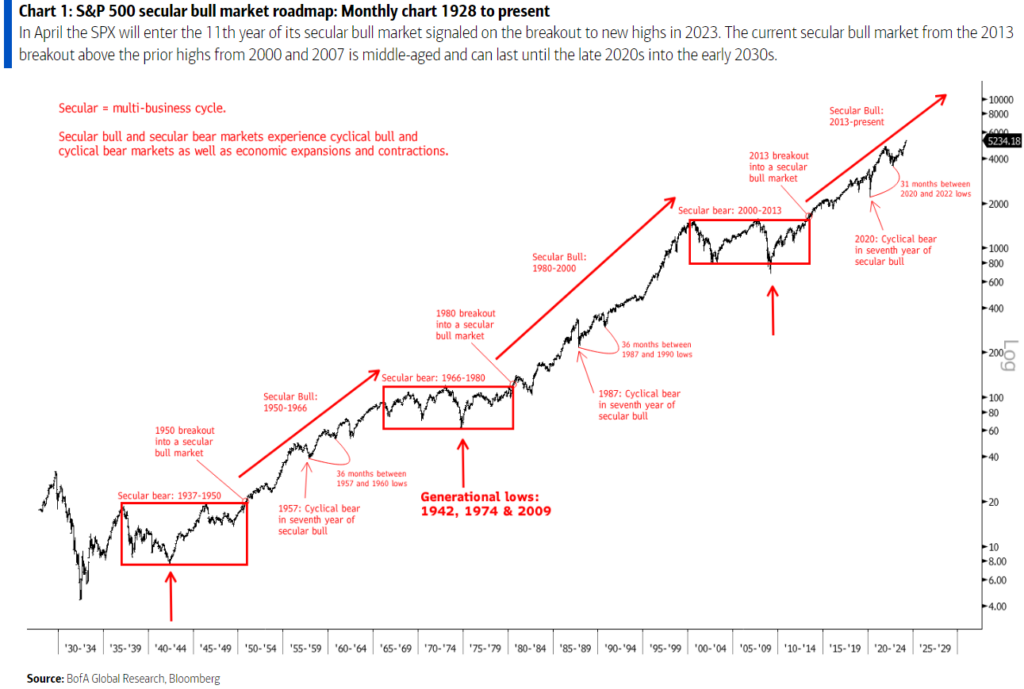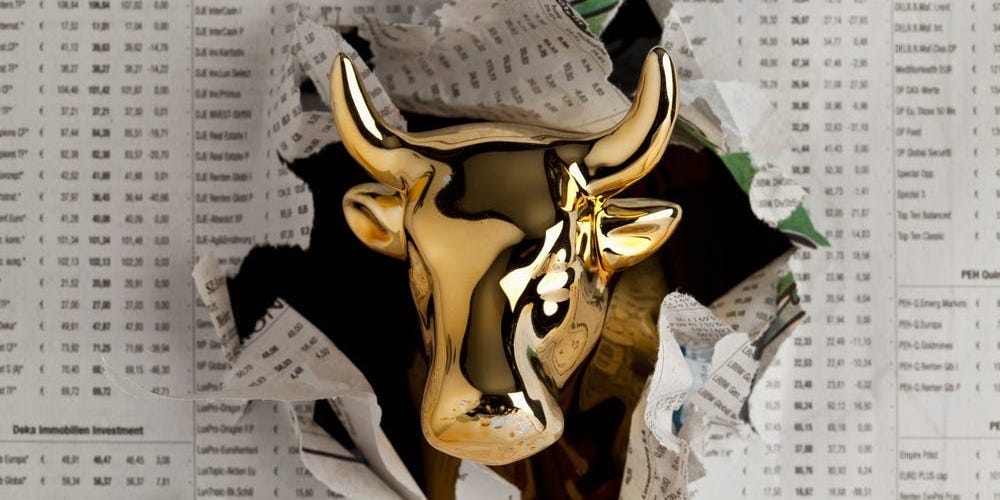- The long-term bull market in stocks is about to turn 11 years old, according to Bank of America.
- The bank called the bull rally "middle-aged" and said it could surge another 34% through the end of 2026.
- The S&P 500 would trade at about 7,000 if such a gain materialized.
The long-term bull rally in the stock market is about to turn 11 years old, and there's still plenty of gas in the tank to drive further gains, according to Bank of America.
The secular bull rally officially began in April 2013 when the stock market eclipsed its prior peaks from 2007 and 2000. The long-term rally was once again confirmed last December when the S&P 500 broke above its bullish cup and handle pattern near the 4,600 level.
Since then, the index has climbed 14% to record highs.
The bank said in a recent note that the gains in the S&P 500 should continue, suggesting that the index could rally another 34% by the end of 2026.
"The SPX has rallied 46% from its October 2022 low. The median rally from a big low of 106% lasts approximately four years, suggesting that SPX 7000 is not ruled out into late 2026," Bank of America technical strategist Stephen Suttmeier said.
As to when the current secular bull rally will end, Suttmeier sees no end in sight until at least the end of the 2020s.
"The secular bull markets from 1950-1966 and 1980-2000 lasted 16 and 20 years, respectively, which means that the current secular bull market is middle-aged and can extend until 2029 to 2033," Suttmeier explained.

The December breakout above 4,600 signaled two near-term price objectives: 5,200 and 5,600, according to the note. With the 5,200 objective having been reached, the next objective is a near-term gain of 7% to about 5,600.
Additionally, Suttmeier highlighted that the S&P 500's breakout above its prior record high of about 4,800 in January signals another price objective of 6,150, which represents 18% upside from potential levels and aligns with a catch-up trade related to the Presidential Cycle, which suggests the fourth year of a first-term president is bullish for stocks.
To the downside, Suttmeier said investors should keep an eye on the 4,800 and 4,600 levels for support, which represents potential downside of as much as 12% from current levels.
